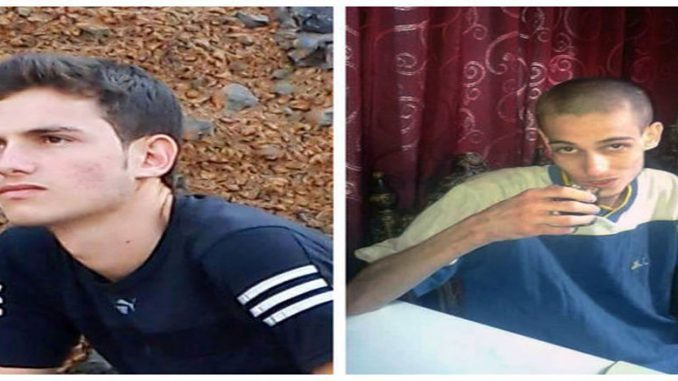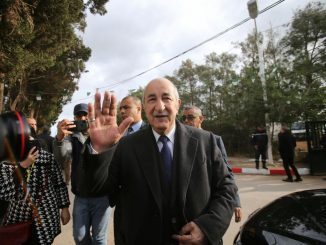
As many as 13,000 people most of them opposition supporters have been executed at Syrian ‘Saydnaya’ military prison near Damascus.
Horrifying details have been released from inside a Syrian “human slaughterhouse” where up to 13,000 prisoners have been tortured and executed in the government facility.
Former inmates detail the shocking extent of the abuse they experienced in Saydnaya, a facility deigned to humiliate, degrade, torture and ultimately kill those trapped inside.
Amnesty International, which published the report on Tuesday, believe that the suffering and appalling conditions at Saydnaya “have been deliberately inflicted on detainees as a policy of extermination”.
The findings of the report are based on an investigation carried out between December 2015 and December 2016.
Amnesty International spoke to 84 witnesses, included former Saydnaya guards and officials, detainees, judges and lawyers, as well as national and international experts on detention in Syria.
The seven most horrifying details to emerge:
1. Mass killings
Between 2011 and 2015 up to 13,000 people were killed.
Groups of up to 50 people were taken out of their cells and hanged, the report states.
Hangings at the prison were carried out at least once a week, sometimes twice, Amnesty International said.
Detainees were transported to another prison building on the grounds of Saydnaya, where they were hanged. Throughout this process, they remain blindfolded.
They do not know when or how they will die until the noose is placed around their necks.
“They kept them [hanging] there for 10 to 15 minutes. Some didn’t die because they are light.
“For the young ones, their weight wouldn’t kill them. The officers’ assistants would pull them down and break their necks,” said a former judge who witnessed the hangings.
2. The sounds of the dying
Guards collected detainees from their cells in the middle of the night, usually on Monday and Wednesday.
“If you put your ears on the floor, you could hear the sound of a kind of gurgling. This would last around 10 minutes… We were sleeping on top of the sound of people choking to death.
“This was normal for me then,” said “Hamid”, a former military officer arrested in 2011.
3. Dead detainees in cells
The cell floors were described as having “blood and puss” from prisoners’ wounds. Guards collected the bodies of dead detainees each morning at about 9am.
Nader, a former Saydnaya detainee, said: “Every day there would be two or three dead people in our wing… I remember the guard would ask how many we had.
“He would say, ‘Room number one – how many? Room number two – how many?’ and on and on… There was one time that… the guards came to us, room by room, and beat us on the head, chest and neck.
“Thirteen people from our wing died that day.”
4. Detainees aren’t criminals
Nicolette Waldman, the report’s author, said: “The vast majority of victims in Saydnaya who are being subjected to mass hangings and extermination are civilians.
“Their most common profiles are human rights defenders, political dissidents, journalists, students, demonstrators.
“They have not committed any crime other than being perceived to oppose the Syrian government.”
5. No trial
Not one of the detainees condemned to hang at Saydnaya Prison is given a fair trial, Amnesty reports.
Before people are hanged, they undergo a perfunctory, one or two-minute procedure at a so-called Military Field Court.
One former judge from a Syrian military court told Amnesty International the “court” operates outside the rules of the Syrian legal system.
“The judge will ask the name of the detainee and whether he committed the crime. Whether the answer is yes or no, he will be convicted… This court has no relation with the rule of law. This is not a court,” he said.
The convictions issued by this so-called court are based on false confessions extracted from detainees under torture.
Detainees are not allowed access to a lawyer or given an opportunity to defend themselves.
Those who are condemned to death do not find out about their sentences until minutes before they are hanged.
6. Rape used as a form of torture
Rape was used as a form of torture, with prisoners in some cases being forced to rape other inmates, the report released on Tuesday states.
7. Government complicity
Amnesty International said such “war crimes and crimes against humanity” are authorised at the highest levels of the Syrian government.
Lynn Maalouf, deputy director for research at Amnesty International’s regional office in Beirut, said: “The horrors depicted in this report reveal a hidden, monstrous campaign, authorised at the highest levels of the Syrian government, aimed at crushing any form of dissent within the Syrian population.
“We demand that the Syrian authorities immediately cease extrajudicial executions and torture and inhuman treatment at Saydnaya Prison and in all other government prisons across Syria. Russia and Iran, the government’s closest allies, must press for an end to these murderous detention policies.
“The upcoming Syria peace talks in Geneva cannot ignore these findings. Ending these atrocities in Syrian government prisons must be put on the agenda.
“The UN must immediately carry out an independent investigation into the crimes being committed at Saydnaya and demand access for independent monitors to all places of detention.”
Systematic hangings are said to have been carried out secretly and those killed were buried at mass graves outside the capital, with families not informed of their fate, it said.
“Many other detainees at the prison have been killed after being repeatedly tortured and systematically deprived of food, water, medicine and medical care,” claims the report.
The alleged executions were authorised at the highest level and amount to war crimes.
Amnesty deputy director of research in Beirut office, Lynn Maalouf:
“Every week, usually on Mondays and Wednesdays, groups of detainees, of between 20 to 50 detainees, would be taken from their cells, told that they would be transferred to civilian detentions but instead of that, they were taken to a cell in another building inside of Saydnaya where they would be hanged.”
The data collected only goes up to 2015.
Amnesty says it interviewed 84 people, including former guards, detainees and prison officials.
A year ago UN rights experts said witness accounts suggested widespread detentions and deaths among them “were on a massive scale”.
The Syrian government has previously denied killing or mistreating prisoners.







